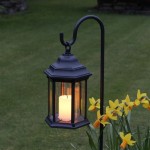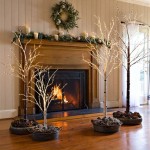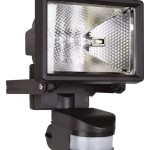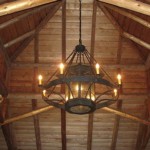How to Run Power for Outdoor Lighting
Adding outdoor lighting to your home can enhance safety, security, and the overall aesthetic appeal of your property. Whether you're illuminating a patio, walkway, or garden, the key to successful outdoor lighting lies in running power efficiently and safely.
Planning the Layout
Before running power, determine the location and quantity of light fixtures you need. Create a plan that includes the distances between fixtures, the location of power outlets, and the routing of wires. Consider the height and type of fixtures, as well as the desired brightness levels.
Choosing the Right Wiring
Outdoor wiring must be resistant to moisture and UV radiation. Select direct-burial cables marked "UF" or "UF-B," which are specifically designed for underground installations. These cables have an insulated copper core encased in a protective jacket that prevents moisture and damage.
Trenching and Conduit
To protect the wires from damage, bury them in trenches or enclose them in conduits. Trenches should be at least 18 inches deep for direct burial cables or 12 inches deep for cables in conduits. Use a trenching tool or shovel to dig the trenches and lay the cables carefully.
Installing Junction Boxes and Outlets
Junction boxes are used to connect wires and provide access for future maintenance. Place junction boxes at strategic points where wires meet or need to be redirected. Outdoor lighting outlets are designed to accommodate weather-resistant plugs and should be protected by covers.
Wiring the Fixtures
Connect the wires from the junction boxes to the light fixtures according to the manufacturer's instructions. Use wire nuts or connectors to secure the connections and wrap them with electrical tape to prevent moisture intrusion. Ensure all connections are tight and secure.
Grounding
Grounding is essential for safety. Connect a grounding wire to each fixture and run it back to the main electrical panel. The grounding wire provides a path for excess electricity to flow to the ground, preventing shocks.
Testing and Troubleshooting
Once the lighting system is installed, test it thoroughly to ensure it operates properly. If any issues arise, such as flickering lights or blown fuses, troubleshoot the system by checking the connections, wiring, and fixtures.
Additional Tips
- Use a voltage tester to verify the presence of power before digging or touching wires.
- Consider using timers or photocells to automate lighting for convenience and energy efficiency.
- Choose fixtures that are appropriate for the environment, such as waterproof lights for areas exposed to moisture.
- Regularly inspect and maintain the lighting system to ensure its continued functionality and safety.

Run An Underground Electrical Line Into The Garden To Power Outdoor Light Or A Pond Pump Here S Quickest And House Wiring Electricity

Interior Remodel Diy Electrical Outdoor

How To Run Two Lights From One Switch Electrical

How To Install Outdoor Lighting Premier Of Md Dc Northern Va

How To Run Electrical Wiring Outside Family Handyman

What Do I Have To Keep In Mind When Installing Outdoor Ground Spots Customer Service Q

Easily Install Low Voltage Landscape Lighting

How To Run Electricity A Shed

Outdoor Lighting Power Ryan Electrical

10 Tips For Powering Your Shed Or Garden Meteor Electrical Electical
Related Posts







